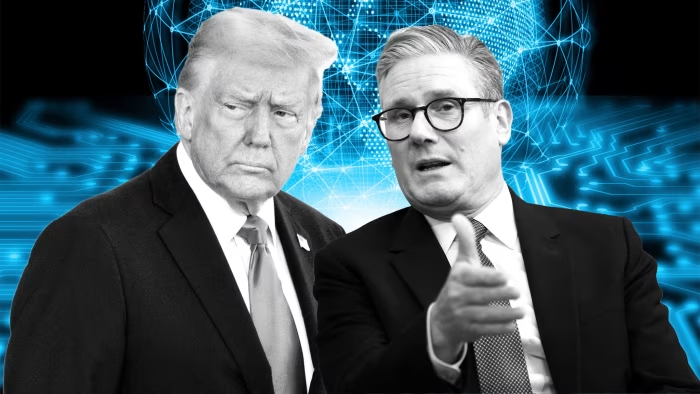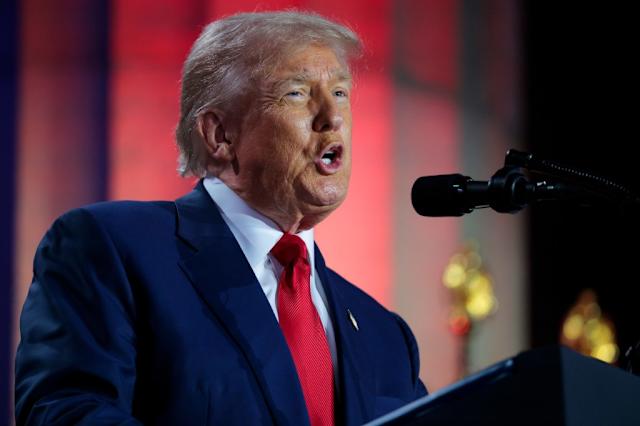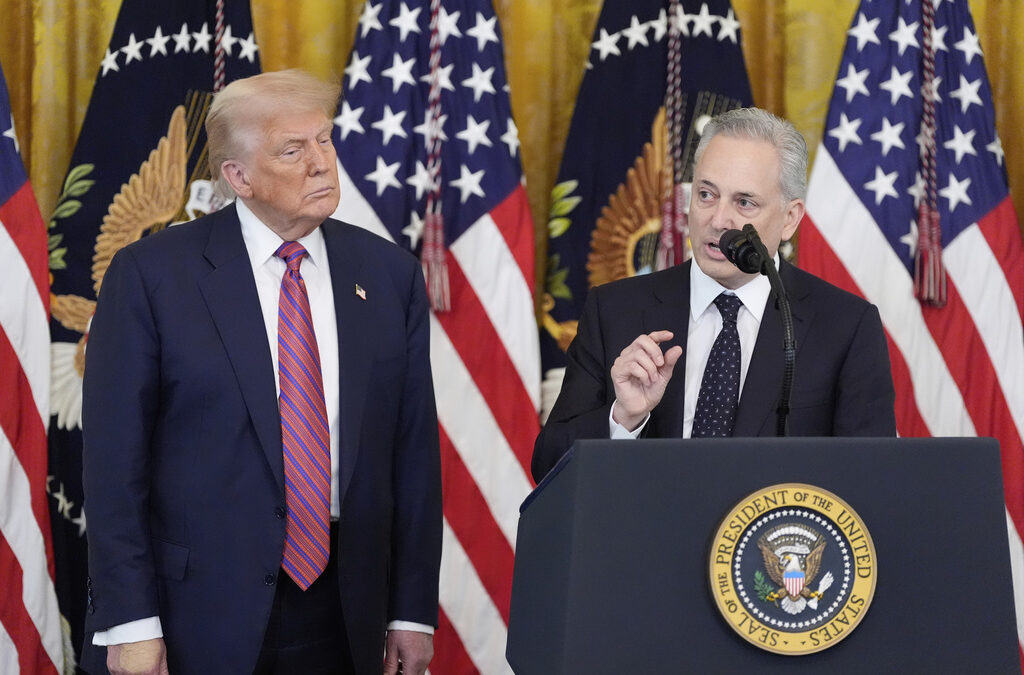
Donald Trump has launched an expansive policy offensive against what he calls “woke AI,” signing three executive and unveiling a 28-page AI Action Plan that rewrites federal procurement rules, slashes regulations, and threatens to choke off funds to states with tough AI laws. The former president says the goal is to reclaim U.S. leadership in artificial intelligence, but critics warn the moves politicize technology and could chill innovation.
Executive Summary
On 23 July 2025, President Donald Trump signed three executive orders aimed at “preventing woke AI” in government, speeding data-center construction, and boosting U.S. AI exports. Central to the package is an order barring federal agencies from buying or licensing large language models (LLMs) that fail new “Unbiased AI Principles,” namely “truth-seeking” and “ideological neutrality”.
A companion AI Action Plan outlines 90+ policy actions: deregulating AI, withholding funds from states deemed overly restrictive, fast-tracking permits for energy-hungry data centers, and packaging full-stack U.S. AI solutions for allies. Supporters hail the plan as a pro-growth antidote to “bureaucratic red tape,” while detractors argue it weaponizes procurement to enforce a partisan worldview and may hamper diversity and safety research.
Timeline of Key Events (July 2025)
What “Woke AI” Means in Trump’s Order
Trump’s “Preventing Woke AI in the Federal Government” order frames “woke AI” largely around Diversity, Equity & Inclusion (DEI). It defines DEI as any suppression, distortion or over-representation “on the basis of race or sex,” and lists concepts such as critical race theory, transgenderism, intersectionality and systemic racism as evidence of ideological capture.
Key Examples Cited by the Order
- AI model that altered historical figures’ race for image prompts.
- LLM that refused to celebrate white achievements while honoring others.
- Chatbot refusing to misgender even to avert nuclear apocalypse.
The Two Unbiased AI Principles
OMB must publish implementation guidance within 120 days. Agencies then have 90 days to retrofit existing contracts and ensure all future LLM procurements embed these clauses—vendors who violate them pay decommissioning costs.
Overview of the Three Executive Orders
Inside the AI Action Plan
Pillars & Flagship Policies

- Infrastructure Surge – Incentivize private capital to build data centers, semiconductor fabs, power plants; streamline federal energy approvals.
- Regulatory Rollback – Direct agencies to repeal or suspend rules that “smother innovation,” including DEI audits and climate impact mandates.
- Global Tech Diplomacy – Package U.S. LLMs + chips + cloud as turnkey exports for allies, locking them into American AI standards.
- Federal-State Funding Gate – Limit grants to states with “burdensome” AI laws, a veiled threat after Senate nixed a 10-year state-preemption clause earlier this month.
Impact on Federal Procurement & Contracting
The federal government is the single largest technology customer worldwide, spending > $70 billion annually on IT. By conditioning all AI purchases on compliance with Unbiased AI Principles, the order effectively forces contractors—from cloud giants to niche NLP startups—to choose between lucrative federal deals and designs that may violate their existing DEI or safety commitments.
Agencies must embed the new clauses in every LLM contract; failure triggers vendor-funded decommissioning. This mirrors Trump’s earlier social-media order linking Section 230 protection to free-speech pledges, but critics say AI complexity makes enforcement far murkier.
State-Federal Funding Clash
The plan empowers OMB and FCC to weigh a state’s “AI regulatory climate” before awarding funds. This resurrects a tussle Congress just fought: a proposed decade-long ban on state AI regulation was stripped from Trump’s tax-and-spending megabill after bipartisan revolt. Tech giants wanted preemption, while state attorneys general argued it undercut privacy and civil-rights enforcement.
States like California and Illinois—home to strict AI bias or privacy statutes—now risk losing competitive grants for workforce training, edge-computing pilots or smart-city projects under the plan’s discretionary criteria.
Deregulation, Data Centers & Energy Policy
Trump’s second EO instructs the Council on Environmental Quality to create streamlined National Environmental Policy Act (NEPA) exclusions for many data-center projects. Environmental groups warn data centers can draw up to 50 MW each, strain local water supplies, and raise grid stress during heat waves.
Simultaneously, the AI Action Plan urges Congress to expand energy infrastructure and fast-track nuclear-power approvals to meet AI’s compute appetite.
International Implications & the China Factor

Every document and speech in this rollout casts AI as a geopolitical race with China. Trump revoked Biden-era AI-export controls dubbed the “diffusion rule,” arguing they alienated allies and hamstrung domestic chip sales. Critics say easing chip exports risks accelerating China’s military AI and undermining the CHIPS Act’s objectives.
The plan also pledges “full-stack” export packages—models, hardware, software—to friendly nations so they adopt U.S. standards over Chinese alternatives.
Tech-Industry Reaction: Nervous Compliance vs. Cheerleading
Many companies may launch stripped-down “anti-woke” model variants to win contracts, echoing earlier moves to create “child-safe” or “health-care-compliant” versions.
Legal & Constitutional Questions
- First Amendment – Conditioning contracts on ideological content could be challenged as compelled speech for contractors.
- Equal Protection – The targeting of DEI language might be contested as discriminatory against protected classes.
- Federalism – Funding threats to states may violate anti-commandeering doctrine if deemed coercive.
Lawsuits are expected from civil-rights groups once procurement rules take effect early 2026.
Ethics, Bias & the Objectivity Paradox
AI ethicists say “pure objectivity” is illusory; training data reflects social reality. Removing DEI safeguards might re-expose marginalized groups to harmful stereotypes. Trump officials counter that safety layers often suppress conservative viewpoints or obscure factual accuracy.
Comparison with Biden-Era AI Policy
Potential Economic & Labor-Market Effects
- Data-Center Boom – Streamlined permits could unlock >$120 billion in private investment over five years.
- Chip Demand – Nvidia, AMD and Intel expected to ship millions more AI accelerators due to relaxed export curbs.
- Reg-Tech Compliance – Startups may pivot to “compliance-as-a-service” for Unbiased AI audits; estimates $500 million market by 2027.
National-Security Dimensions

DoD’s Joint AI Center and intelligence agencies must now verify LLM neutrality before deployment. Supporters argue this reduces manipulation risks; skeptics say adversaries could still inject biases via training data, and “purity tests” may delay urgently needed battlefield decision-tools.
Media, Copyright & Content Moderation Issues
In his summit speech, Trump called strict copyright payments for AI training “impractical,” signaling resistance to bipartisan bills in Congress. That stance pleases generative-AI firms but alarms publishers seeking royalties. Meanwhile, ideological-neutrality clauses could punish chatbots that remove extremist content, reviving old Section 230 debates in a new guise.
Political Context: Culture Wars, 2024 Campaign Echoes
The anti-woke-AI push extends Trump’s broader assault on DEI, echoing battles over school curricula, ESG investing and university diversity offices. It energizes conservative voters who view tech as biased, but risks alienating moderates concerned about civil rights.

Leave a Reply